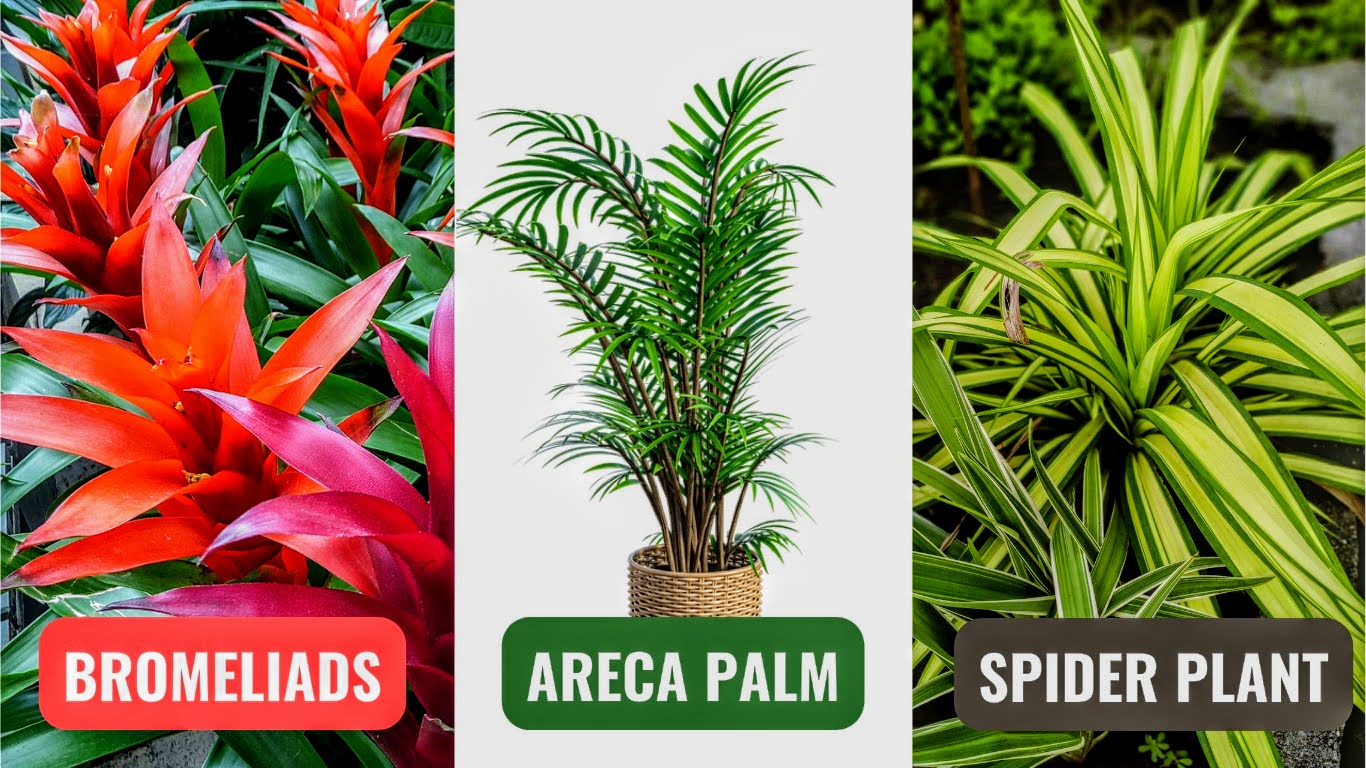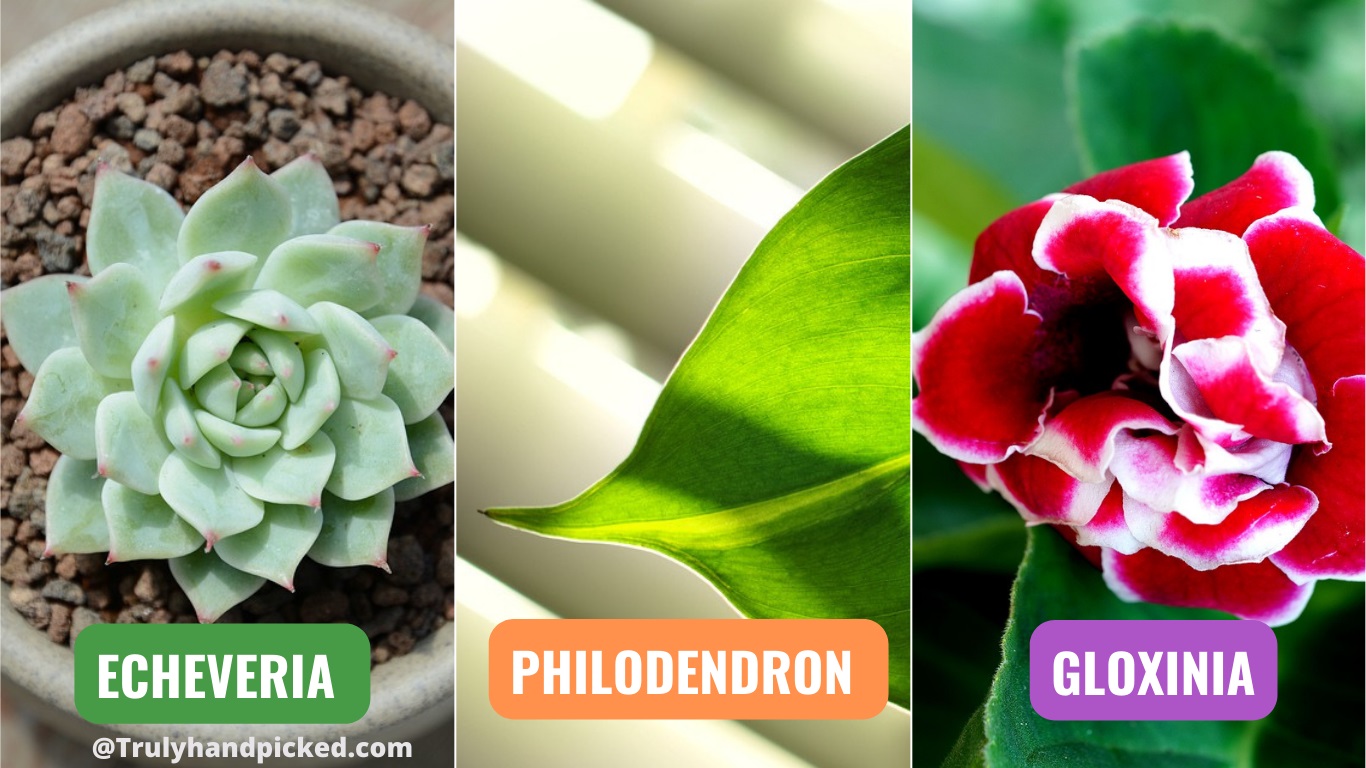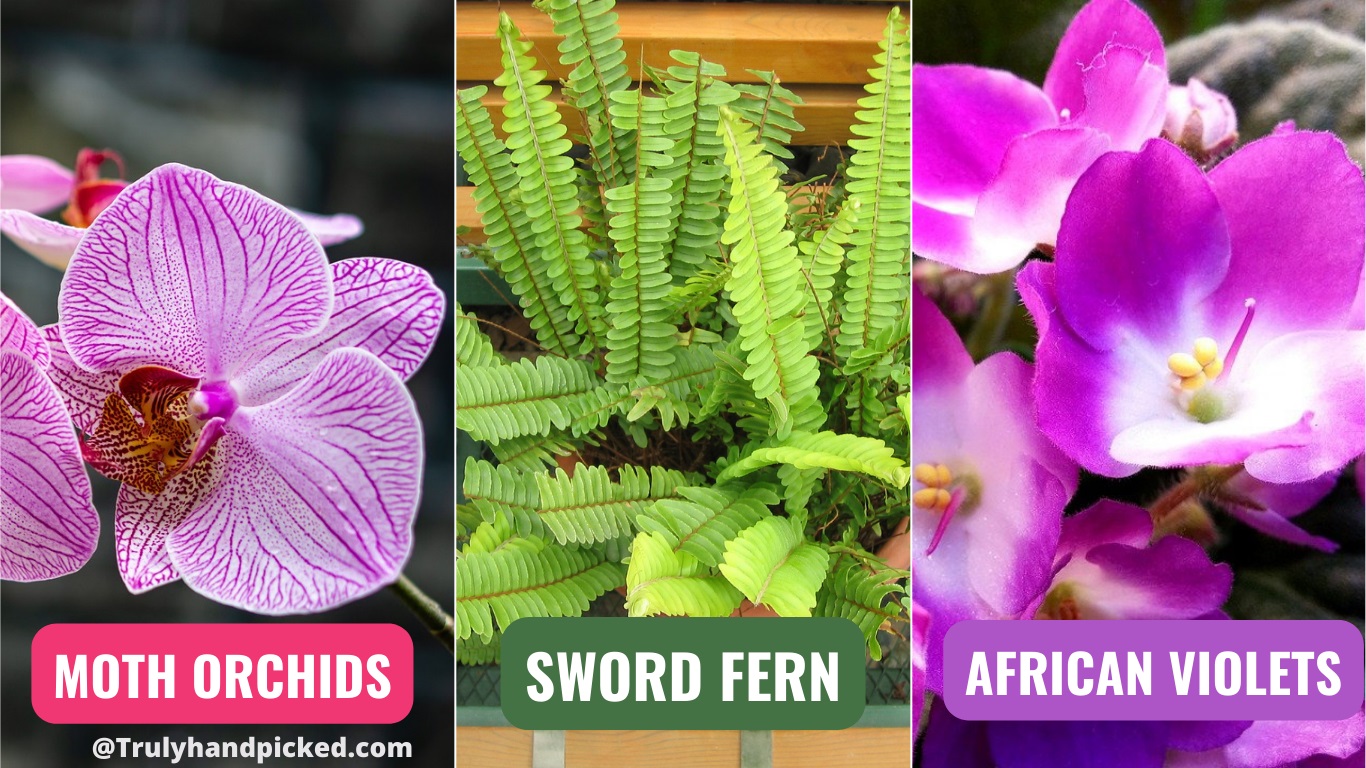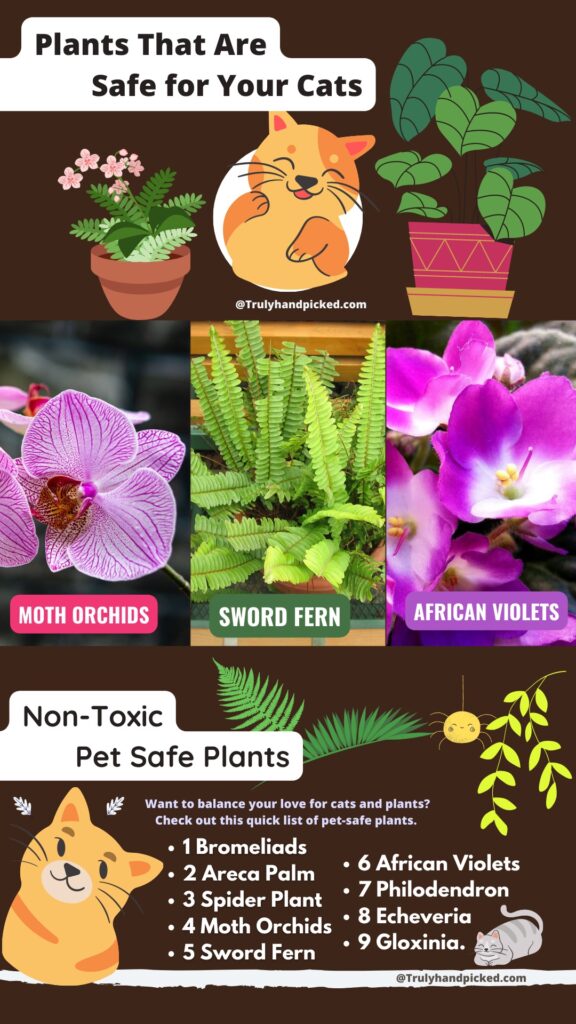House plants that are safe for cats: Want to balance your love for cats and plants? Check out this quick list of pet-safe plants. 1 Bromeliad, 2 Areca Palm, 3 Spider Plant, 4 Moth Orchids, 5 Sword Fern, 6 African Violets, 7 Philodendron, 8 Echeveria, and 9 Gloxinia.
These flowering plants and a few lush green pet plants are non-toxic and safe for your feline, while they also make you feel at home and in the lap of nature.
Cat-parents complain that they can’t grow houseplants to keep their pets safe from any poisonous reactions. Some houseplants may look exotic, and be unharmful to humans, but sometimes they act toxic to our beloved pets.
So, today here we come up with the best 9 options of catching houseplants, which are absolutely safe for cats from every aspect. Let’s check the list below and pick one to give your place a touch of nature without making your moggy annoy a bit-
9 Indoor Plants That Are Safe for Cats

Bromeliads:
Bromeliads are one of the most good-looking flowering houseplants with vibrant blossoms. This tropical houseplant can be a perfect showpiece for your drawing room due to its exclusive display.
How to care Bromeliads?
Soil: Sandy and little acidic type soil with a fast-draining quality
Sun Exposer: Sun with partial or full shade
Water Needs: This plant mostly seeks natural water like rainwater. However, you can water it after every 14 days during the scorching summer days.
Fertilization: It doesn’t need any, use a base of peat moss and any organic plant food during the plantation.
Climate: Maintain a temperature between 55 to 80 degrees F with the hardiness zone 10 to 11.
If you are looking for some low light tolerant plant check these beautiful low light loving indoor plants for office and living room.

Areca Palm:
This is one of the most classy-looking perennial plants to have. The plant can grow up to 15 feet while fully thriving and have no toxic element at all.
Soil: Pick loose sandy type soil with well-drained quality and with a part of coco coir
Sun Exposer: Full to partial sun
Water Needs: Moderate water needs like once in a week
Fertilization: Dry organic plant food is best for areca palms like pine bark or shredded leaves
Climate: A temperature between 65 to 75 degrees would be better with 50% to 70% humidity
Spider Plant:
Spider plant is another great houseplant that is absolutely safe for any house pet including cats. The beautiful foliage even attracts cats more effectively rather than disturbing them, when fully grown.
Soil: Loose loamy soil with well drain quality and a pH level between 6.1 to 6.5
Sun Exposer: Sun with partial or light shade
Water Needs: It has a very moderate water need, like once in a week
Fertilization: Spider plant is a low feeder and like liquid organic fertilizer the most
Climate: It prefers low humidity with a temperature between 60 to 8 degrees F
If you are looking for options to prevent stray cats from entering your garden/yard check these quick ways to deter cats from your garden.
Moth Orchids:
Moth orchid is one of the best orchid species that grow elegant white flowers over bare stems. This houseplant is like a masterpiece to grow indoors and has no harmful properties that can harm your cats a bit.
Soil: Use soil that imitates the potting soil of a host tree instead of a regular potting mix. The pH balance would be perfect between 5.5 to 6.1
Sun Exposer: Sun with light shade
Water Needs: After every 10-14 days gap or only when the top surface seems dry
Fertilization: Try to use dry organic plant foods like redwood bark chips, tree bark, pine bark, etc.
Climate: It can thrive in normal house temperatures like anything between 60 to 85 degrees F with 50% or higher humidity.
List of amazing plants with red and green leaves.
Sword Fern:
Sword fern is an easy-to-grow houseplant that has no harmful agent, which can bother your cat a little. This tropical fern species needs a high-width space to thrive due to its bushy texture.
Soil: This plant requires a fluffy soil mix that is light and fertile enough with a good draining quality.
Sun Exposer: Full sun to sun with partial shade
Water Needs: It needs regular watering, especially during the scorching summer days
Fertilization: Usefully fertile soil for the plantation and apply organic matter often
Climate: Thrive best in a warm sunny location with a temperature between 64 to 80 degrees F with lightly lower humidity.
African Violets:
It is another wonderful houseplant to grow for its super chic look besides its safe-to-cats quality. This perennial houseplant grows beautiful to violate blossoms around thick foliage and reaches merely 8 inches long while fully thrived
Soil: Use great quality potting soil mixed with peat moss and has well-drained quality
Sun Exposer: Sun with partial shade
Water Needs: It needs a moderate level of water like once in every 6-7 days
Fertilization: Any homemade liquid fertilizer like compost tea, fish emulsion, etc. would be the best to feed an African violate plant.
Climate: It can thrive when kept at a temperature between 65 to 80 degrees F with 80% humidity.
Philodendron (Low Maintenance Indoor Plant):
Philodendron is an elegant-looking houseplant that grows big glossy foliage with soft and succulent stems. The juvenile leaves of this plant look more eye-catchy than the grown ones, and both forms are safe for cats.
Soil: Try loose soil with well-drained quality that must be fully fertile to plant a philodendron
Sun Exposer: Sun with partial shade
Water Needs Water the plant according to the season and growing session. Once in a week is best during the first growing condition.
Fertilization: Use balanced liquid fertilizer that is rich in macro-nutrients to get the best result.
Climate: This plant thrives best when grown at a temperature between 70 to 80 degrees F with high humidity.

Echeveria (Drought-tolerant succulent):
Echeveria is one of the most popular succulent species to grow indoors. It is safe to house pets and that is one of the most appreciated qualities of an echeveria plant, besides its supremely attractive look.
Soil: Sandy, well-drained and slightly acidic soil quality
Sun Exposer: Full sun
Water Needs: Water only when the top surface of the base soil seems dry, after the plantation
Fertilization: Echeveria doesn’t need any fertilizer to thrive, however, you can use a balanced all-purpose fertilizer once in a while.
Climate: It prefers a warm and dry low-humidify climate with a temperature between 50 to 70 degrees F.
Gloxinia (Safe Perennial Flowering Plant):
Gloxinia is one brilliant houseplant to grow that cultivates attractive and colorful flowers along with gorgeous foliage. Neither the tubular flowers nor the big leaves have any toxic element themselves, which can disturb your cat a bit.
Soil: It prefers loose, well-drained, and acidic soil with a pH level between 5.5 to 6.5
Sun Exposer: Sun with partial shade
Water Needs: This plant seeks a moderate level of water that can keep the soil evenly moist but not soggy. Try watering once a week with 1-inch deep level.
Fertilization: Use any balanced fertilizer to feed your gloxinia plant properly from March to September for a better blooming experience.
Climate: It can thrive under high humidity but not in extra dry conditions, and try to maintain the temperature between 60-70 degrees F constantly.
Pinterest Image on Best House Plants That Are Safe for Cats


